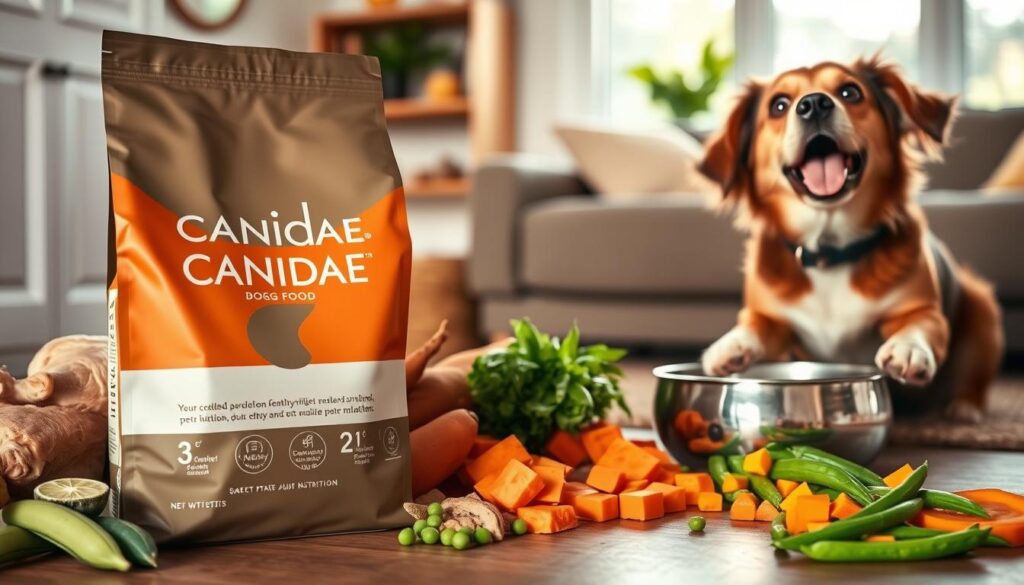As a pet owner, making sure your dog gets the right food is key for their health. Canidae is a well-known brand that offers many high-quality dog food options. But figuring out how much Canidae to feed your dog can be tricky. This guide will help you understand what to consider and how to feed your dog the right amount for their nutrition.

Key Takeaways
- Understand the different types of Canidae dog food and their key nutritional components.
- Learn how to interpret Canidae’s feeding charts and guidelines to determine the appropriate portion sizes for your dog.
- Discover how factors like age, weight, and activity level can influence your dog’s feeding requirements.
- Explore strategies for transitioning your dog to a Canidae diet and addressing any adjustment challenges.
- Gain insights into monitoring your dog’s health and well-being to ensure proper portion control.
Understanding Canidae Dog Food Basics
Canidae dog food is a top choice for your dog’s nutrition. This brand focuses on making food that meets your dog’s needs. They aim to nourish your dog with care.
Types of Canidae Food Products
Canidae has many dog food options for different dogs. They offer grain-free and lamb-based recipes. This variety ensures your dog gets the right nutritional value.
Key Nutritional Components
Canidae’s food is made with quality ingredients. Their recipes have proteins, fats, carbs, vitamins, and minerals. These elements help keep your dog healthy and happy.
Quality Standards and Manufacturing
Canidae is proud of its manufacturing process. They follow strict quality standards in their facilities. This means your dog gets the best Canidae dog food varieties.
“At Canidae, we believe that high-quality, nutritious dog food is the foundation for a healthy, happy pup. Our commitment to excellence is evident in every bite.”
– Canidae spokesperson
How Much Canidae to Feed a Dog: Essential Guidelines
Finding the right amount of Canidae dog food is key for your dog’s health. The right portion size depends on your dog’s size, age, and how active they are. By following these guidelines, you can make sure your dog gets the nutrition they need to stay healthy.
Recommended Feeding Amounts by Dog Size
- Small Dogs (up to 20 lbs): 1/2 to 1 1/2 cups of Canidae dog food per day, divided into two meals.
- Medium Dogs (21-50 lbs): 1 1/2 to 3 1/2 cups of Canidae dog food per day, divided into two or three meals.
- Large Dogs (51-100 lbs): 3 to 6 cups of Canidae dog food per day, divided into two to three meals.
- Giant Breeds (over 100 lbs): 5 to 8 cups of Canidae dog food per day, divided into three meals.
These are just general guidelines. You might need to adjust the Canidae feeding instructions based on your dog’s unique needs and preferences.
Considering Your Dog’s Age and Activity Level
Puppies, senior dogs, and very active dogs might need more dog food portion sizes. They have higher energy and nutritional needs. Check the Canidae feeding chart or talk to your vet to find the right daily feeding amounts for your dog.
Finding the right balance between your dog’s energy and Canidae food is crucial. By following these guidelines and watching your dog’s body condition, you can ensure they get the optimal nutrition to thrive.
